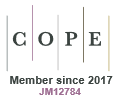Just Accepted
This article has been peer reviewed and accepted for publication. It is in production and has not been edited, so may differ from the final published form.
Investigating the effect of larval instar, post-harvest treatments, and substrate on the nutritional profile of black soldier fly larvae (Hermetia illucens)
Abstract
Context: Black soldier fly larvae (BSFL) is considered a sustainable animal feed ingredient, that feeds in different organic waste streams. It is well established that the nutritional profile of BSFL is influenced by the substrate used. However, the impact on the overall nutritional quality of the larvae when reared on food waste streams in an industrial setting is unknown. Aims: The objective of this study is to determine the nutritional quality and chemical composition of BSFL from two instars (5th and 6th) reared on five different food waste streams from two different waste facilities and postharvest treatments. Methods: BSFL reared with five different waste streams viz. soy waste (S), customised bread-vegetable waste (B), supermarket waste (WL), childcare centre waste (CC) and a food waste mixture (WB), two larvae instars (5th and 6th) and postharvest treatments (blanching and drying) were analysed for proximate composition, amino, fatty acid and mineral content. Key results: The blanching and drying treatments did not affect the chemical composition of the larvae, however, had a negative effect on fatty acid content and reduced the concentration of certain amino acids. The mineral content of BSFL was increased by drying whilst blanching did not result in leaching except for sodium. The larval instar played role in influencing the crude fat and crude protein content, with higher fatty acid content in 6th instar BSFL. Mineral and amino acid profiles were found to be influenced by both the larval instar and the food waste stream used for rearing. Conclusions: This study revealed the interdependent relationship between substrate, instars, and the post harvest treatments in influencing the nutritional properties of the larvae. Implications: The outcomes of this study will assist manufacturers in substrate selection and enable them to custom tailor their operations to arrive at a product with desired nutritional properties.
AN24108 Accepted 28 April 2025
© CSIRO 2025



